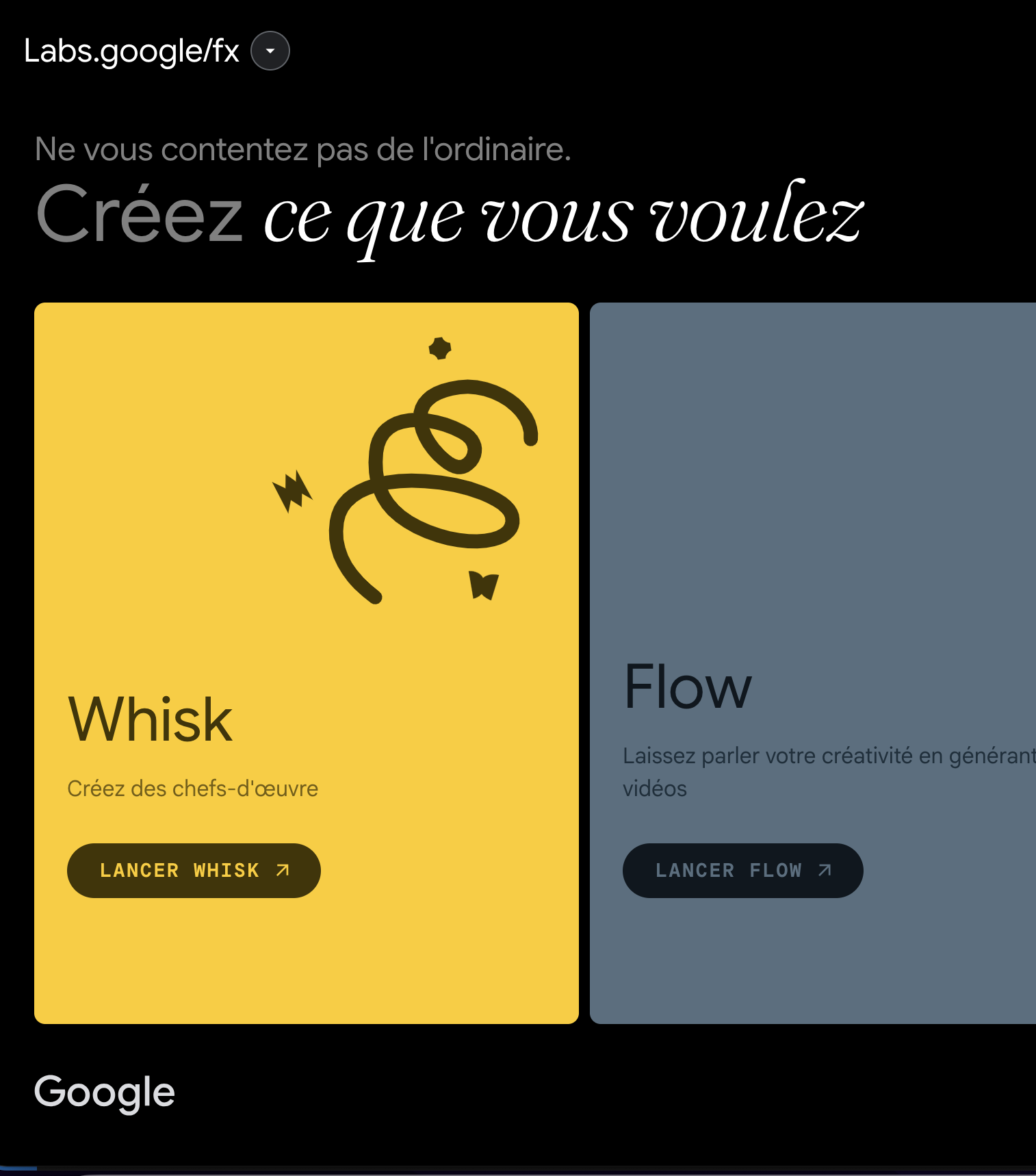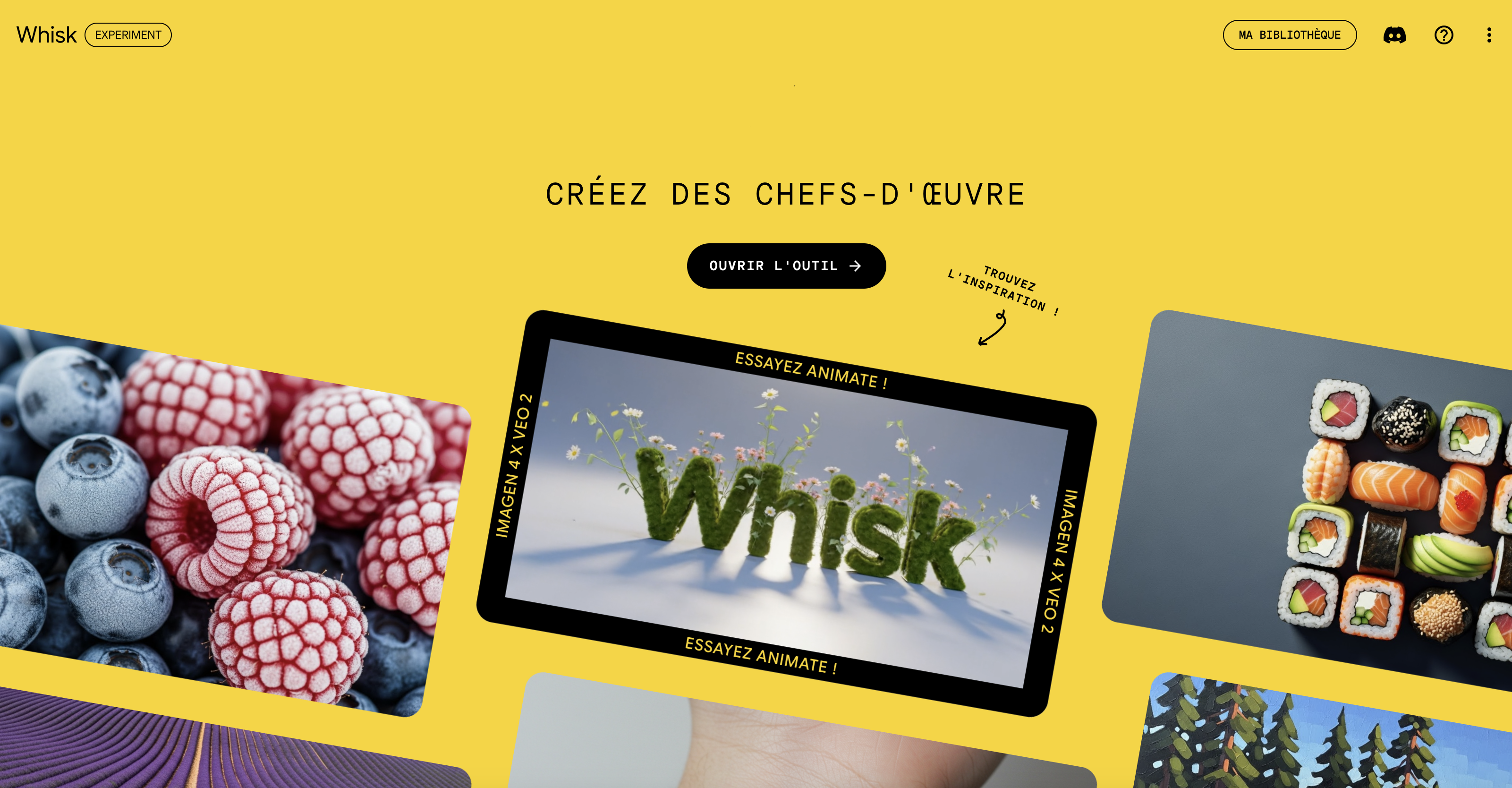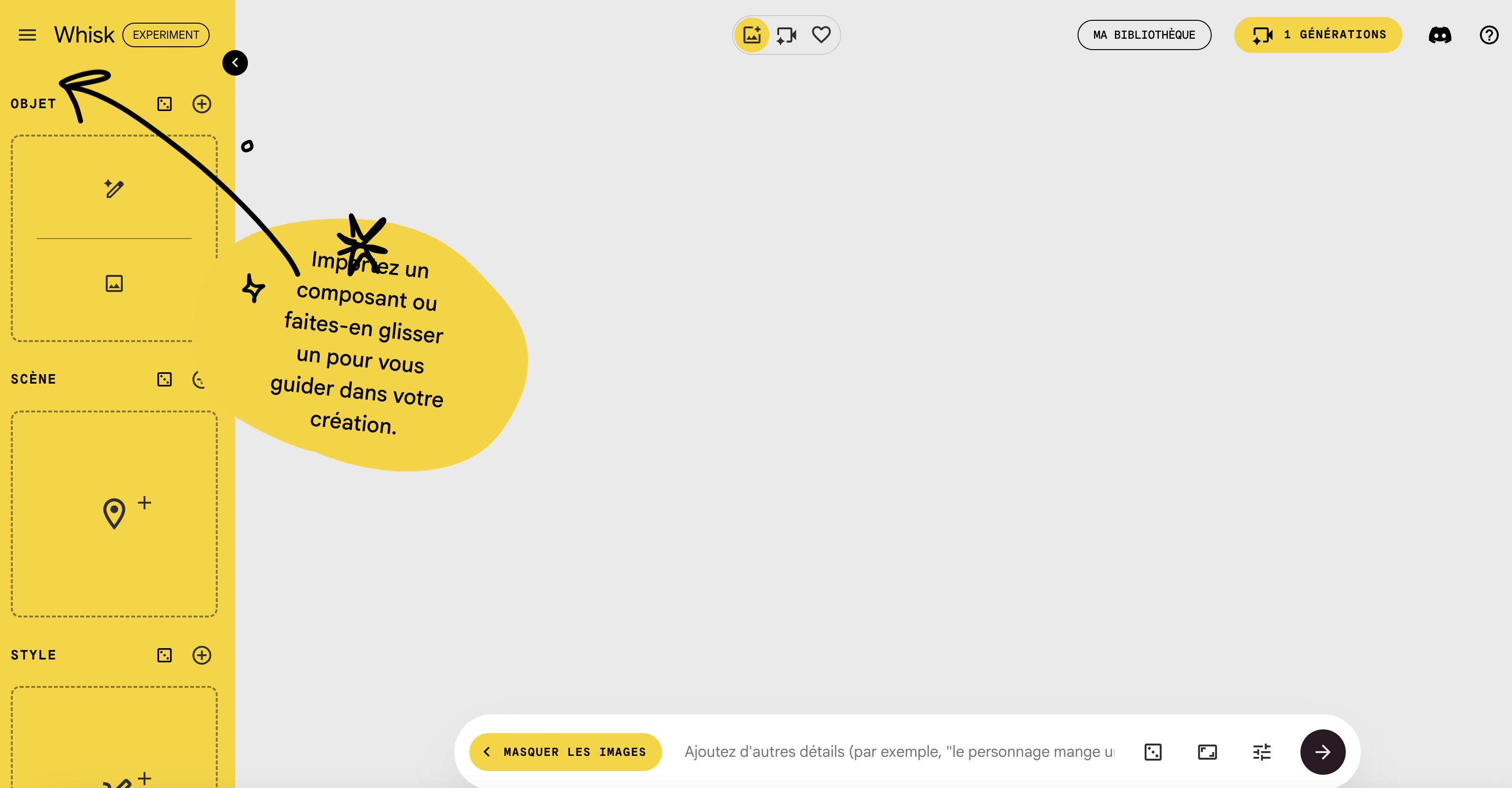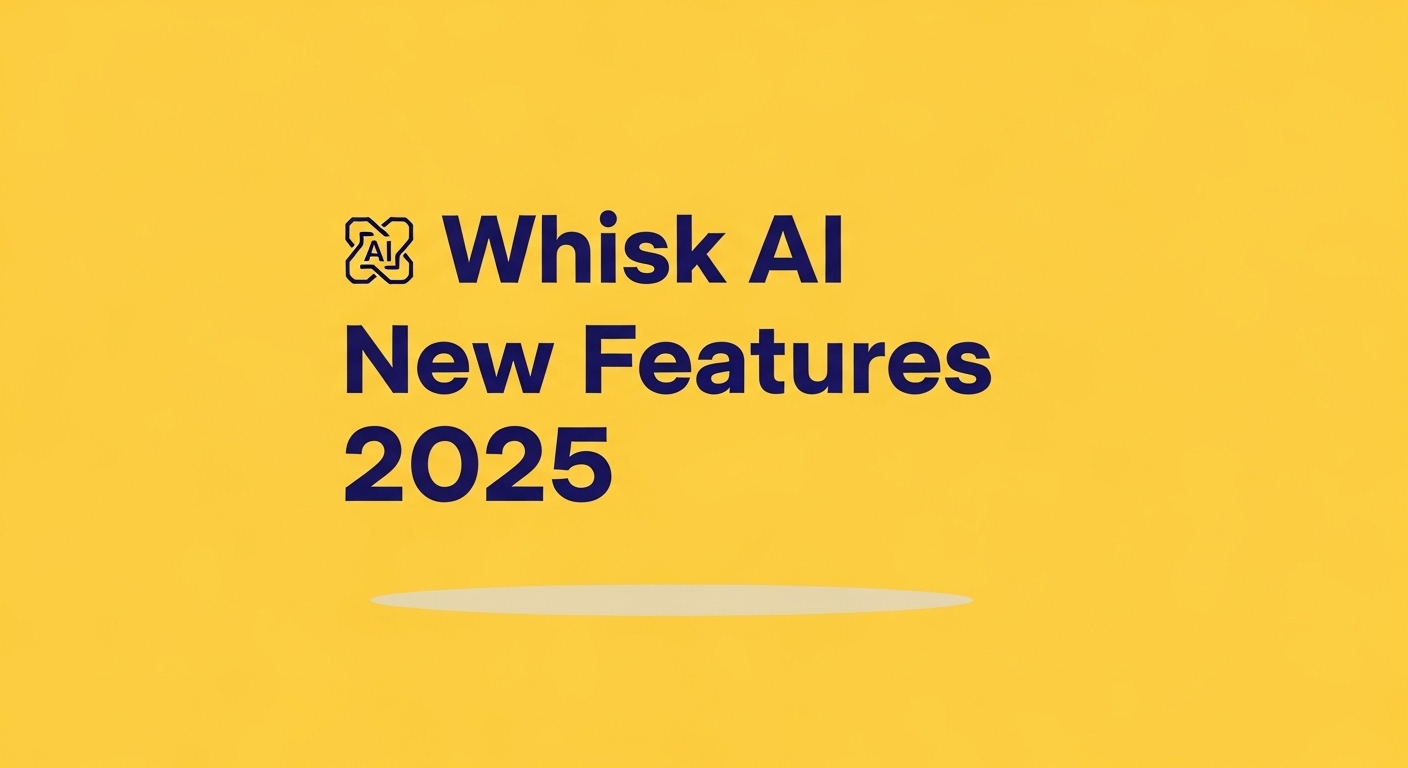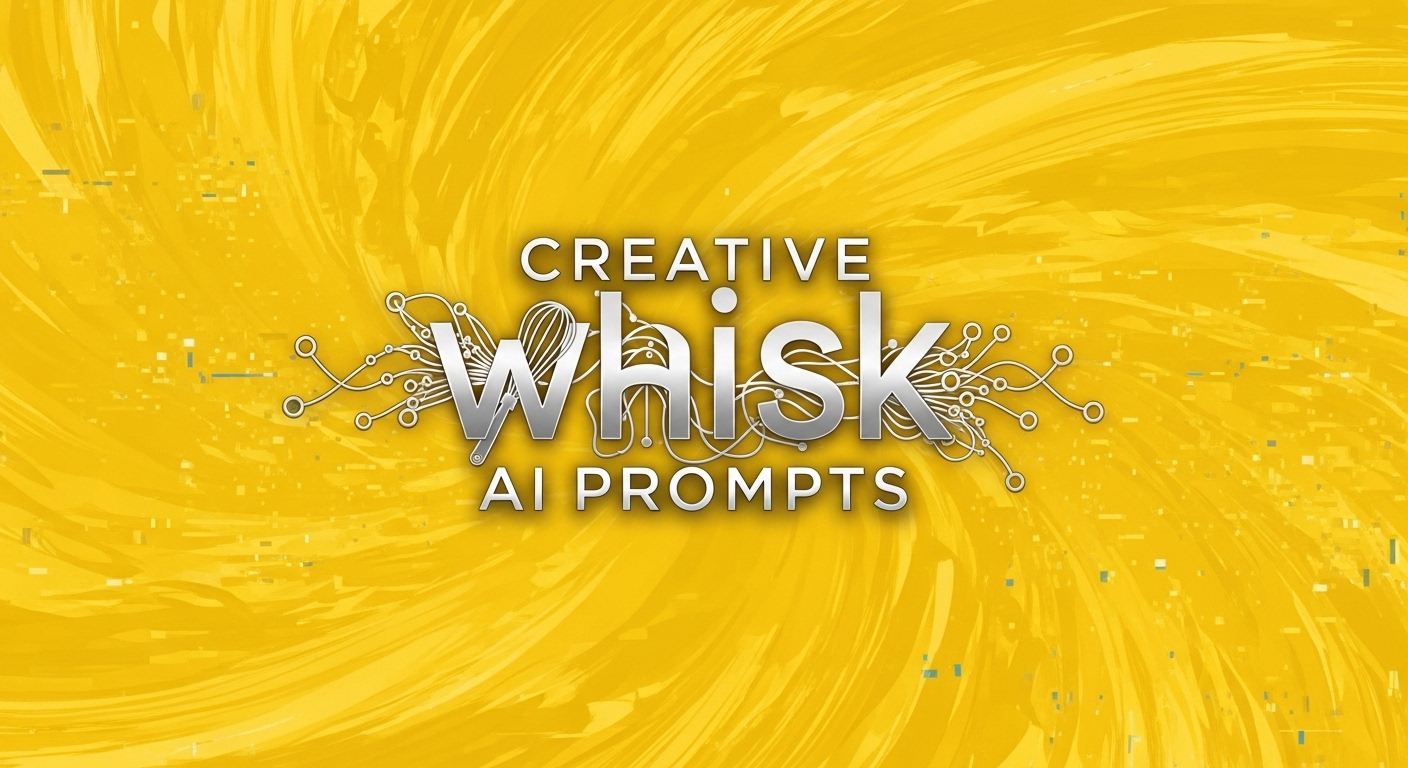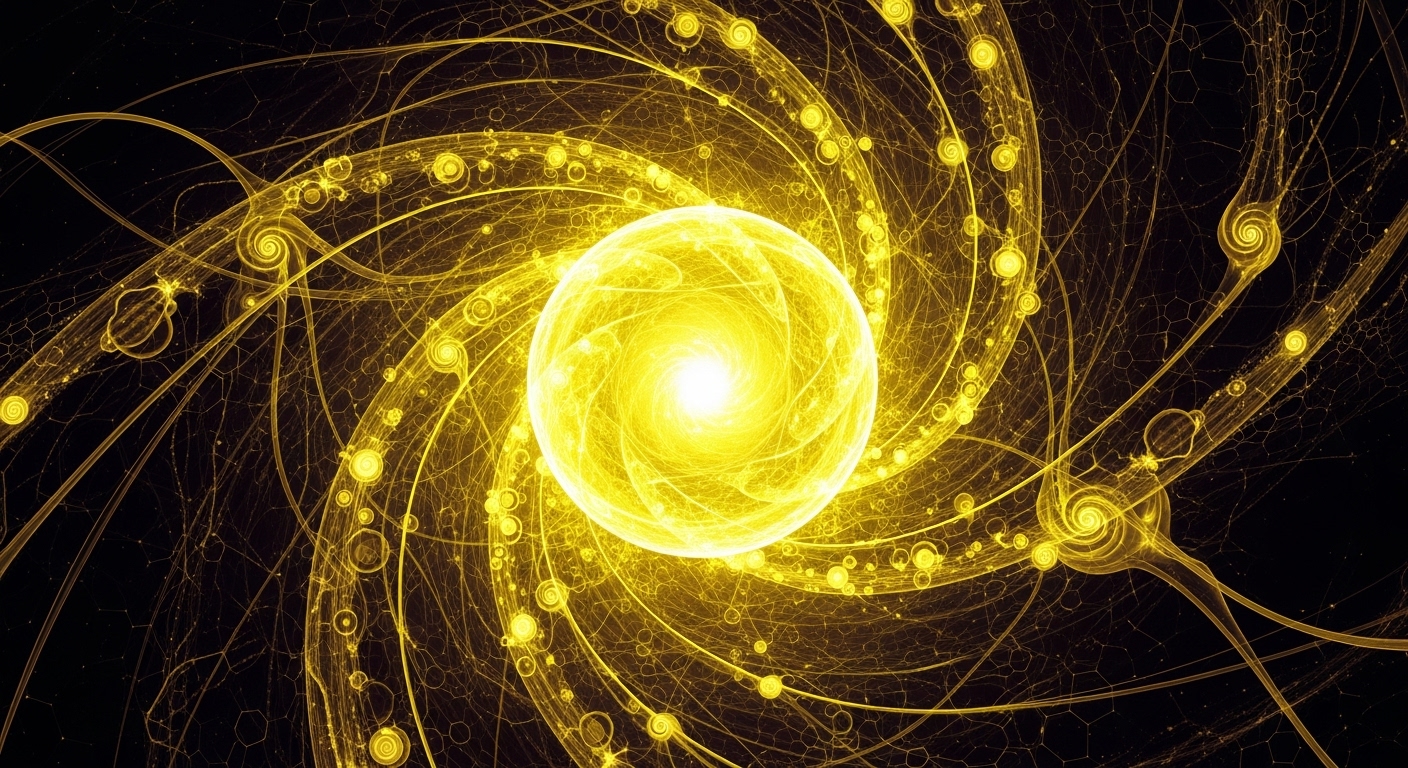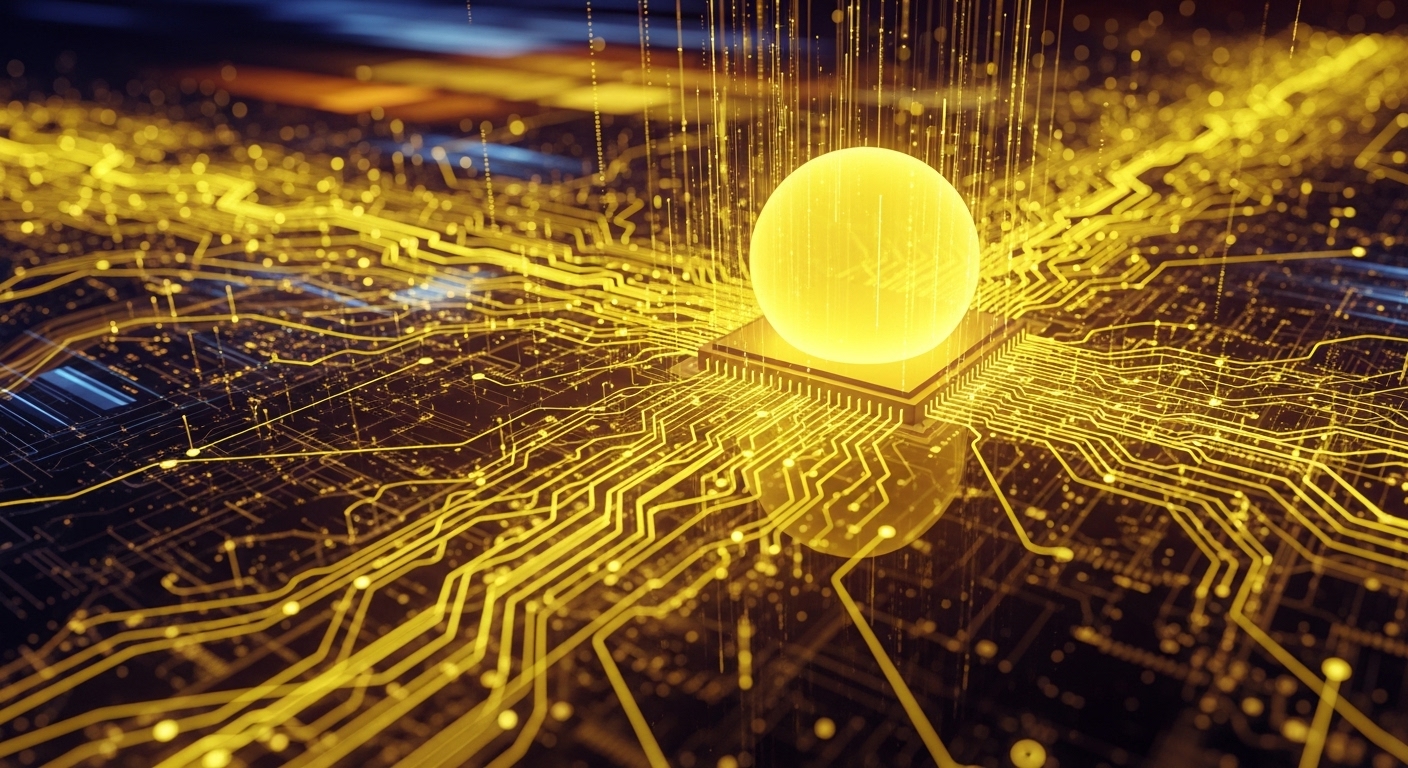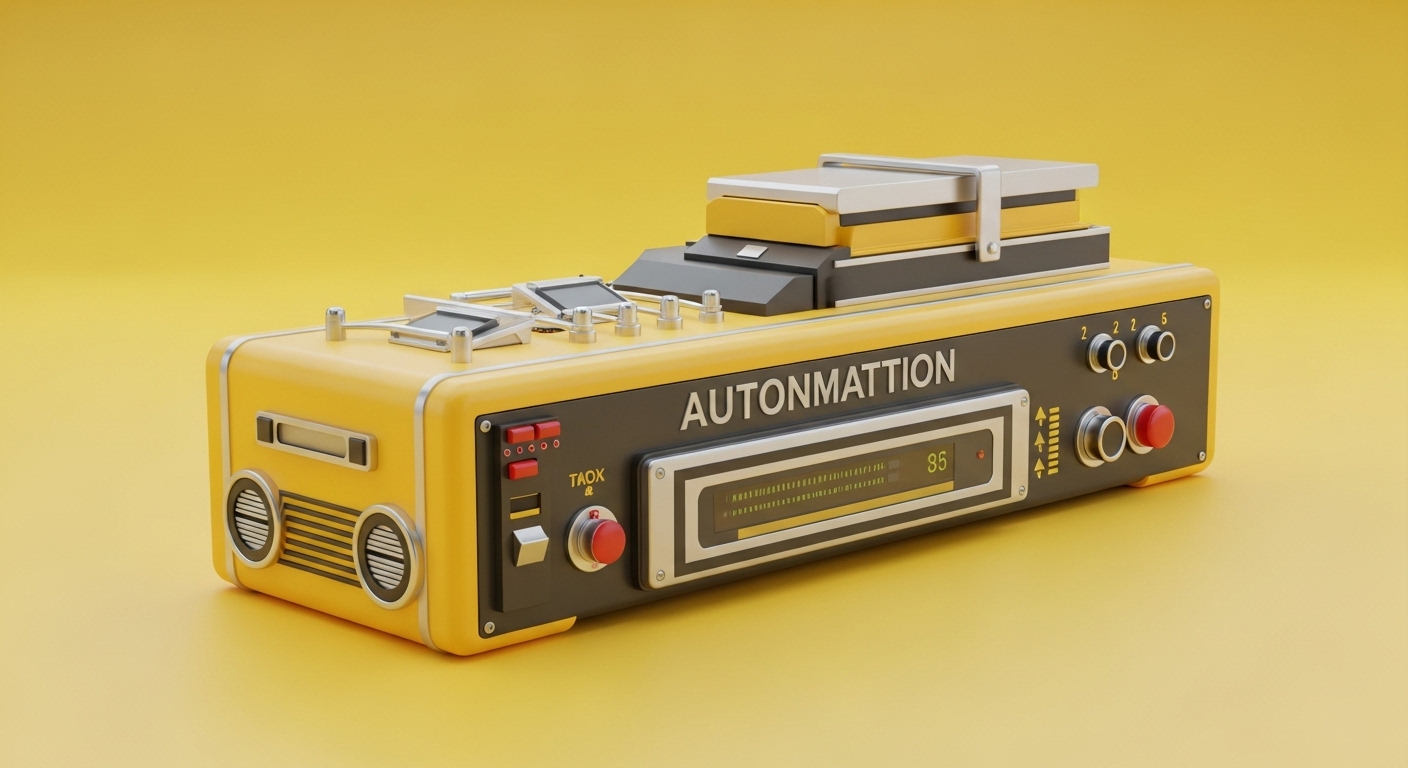Whisk AI གི་ཐུན་མིན་གྲུབ་འབྲས་ཀྱི་ཆེད་དུ་མཐོ་རིམ་གྱི་ལག་རྩལ།
མིག་གི་འཇུག་སྒོ་འདེམས་པའི་སྒྱུ་རྩལ་ལ་བྱང་ཆུབ་པ་བྱེད་པ།
Whisk AI དང་མཉམ་དུ་ལས་ཀ་བྱེད་དུས། ཁྱད་དུ་འཕགས་པའི་གྲུབ་འབྲས་ཀྱི་རྨང་གཞི་ནི་འཇུག་སྒོ་རྣམས་យុទ្ធសាស្ត្រപരമായി තෝරාගැනීමයි. Google Labs གི་གསར་གཏོད་འདིར་མིག་གི་ཆ་ཤས་ཐ་དད་པ་གསུམ་དགོས་ལ། དེ་དག་ནི་བརྗོད་བྱ། ཡུལ་ལྗོངས། དང་ཁྱད་ཆོས་བཅས་ཡིན། མཐོ་རིམ་གྱི་བེད་སྤྱོད་པ་ཚོས་འཇུག་སྒོ་འདི་དག་གི་སྤུས་ཚད་དང་འཚམས་པའི་རང་བཞིན་གྱིས་ចុងក្រោយའབྲས་བུར་ཐད་ཀར་ཤུགས་རྐྱེན་ཐེབས་ཀྱི་ཡོད་པ་ཤེས་ཀྱི་ཡོད། ཁྱེད་ཀྱི་བརྗོད་བྱའི་འཇུག་སྒོར་གསལ་པོའི་ ትኩረትཡོད་པའི་ከፍተኛ විභේදනයක් සහිත රූප තෝරාගැනීම සලකා බලන්න. Whisk AI ཡིས་ཁྱད་ཆོས་གལ་ཆེན་ཁག་ճշգրիտ හඳුනාගෙන මිශ්ර කළ හැකි බව සහතික කිරීම සඳහා විෂයය හොඳින් ආලෝකමත් කර රාමුව තුළ ප්රමුඛව ස්ථානගත කළ යුතුය.
གྲུབ་འབྲས་ལེགས་ཤོས་ལེན་པར། ዐውደ-ጽሑፎችམི་འདྲ་བའི་ནང་ཡག་པོ་ μετάφρασηབྱེད་ཐུབ་པའི་ distinct හඳුනාගත හැකි වයනය, හැඩතල, හෝ ባህሪያት ඇති විෂයයන් තෝරන්න. ཁྱེད་ཀྱི་བརྗོད་བྱའི་བརྙན་རིས་ནང་རྒྱབ་ལྗོངས་ཟང་ཟིང་ཡོད་པ་སྤང་དགོས། གང་ཡིན་ཟེར་ན་འདིས་རིག་ནུས་ཀྱི་ལས་སྒྲུབ་ཀྱི་ algorithm རྣམས་ ግራ ሊያጋባ ይችላል። ལས་རིགས་ཀྱི་པར་པ་དང་ឌីជីታልསྒྱུ་རྩལ་པ་ཚོས་ ገለልተኛወይም අවම පසුබිම් ඇති රූප මඟින් Whisk AI ට ඔබ ආරක්ෂා කිරීමට බලාපොරොත්තු වන මූලිකාංග කෙරෙහි අවධානය යොමු කිරීමට ඉඩ සලසන බව සොයාගෙන ඇත. ထို့အပြင်, သင်၏ဘာသာရပ်ရွေးချယ်မှု၏စိတ်ခံစားမှုဆိုင်ရာသက်ရောက်မှုကိုစဉ်းစားပါ - ရဲရင့်ပြီးဖော်ပြောင်သောဘာသာရပ်များသည်သာမန်သို့မဟုတ်ငြိမ်သက်သောဒြပ်စင်များထက် ပိုမိုဆွဲဆောင်မှုရှိသောနောက်ဆုံးဖွဲ့စည်းမှုများကိုဖန်တီးလေ့ရှိသည်။
උපරිම බලපෑම සඳහා උපායමාර්ගික දර්ශන සංයුතිය
Whisk AI ནང་གི་ཡུལ་ལྗོངས་ཀྱི་འཇུག་སྒོ་དེས་ཁྱེད་ཀྱི་གསར་སྐྲུན་གྱི་ວິสัยทัศน์ལ་རྒྱབ་ལྗོངས་སྤྲོད་པའི་ཁོར་ཡུག་གི་རྨང་གཞི་བྱེད་ཀྱི་ཡོད། མཐོ་རིམ་གྱི་ වෘත්තිකයන්ཚོས་ཡུལ་ལྗོངས་འདེམས་པ་དེ་སྟབས་བདེའི་རྒྱབ་ལྗོངས་འདེམས་པ་ལས་བརྒལ་ཏེ། དེ་ནི་និទាន sâu sắcසහ දෘශ්ය ശ്രේණියක් නිර්මාණය කිරීම පිළිබඳව බව හඳුනා ගනී. မြို့ပြရှုခင်းများ၊ သဘာဝပတ်ဝန်းကျင်များနှင့်ဗိသုကာဆိုင်ရာနေရာများသည်သင်၏အနုပညာရည်မှန်းချက်များပေါ် မူတည်၍ တစ်မူထူးခြားသောအကျိုးကျေးဇူးများကိုပေးသည်။
Whisk AI ལ་ཡུལ་ལྗོངས་འདེམས་དུས། བརྙན་རིས་ནང་གི་འོད་ཀྱི་གནས་སྟངས། ལྟ་ཕྱོགས། དང་བར་སྟོང་གི་འབྲེལ་བ་བཅས་ལ་བསམ་བློ་གཏོང་དགོས། පුළුල් කෝණ දර්ශනවල සිත්ගන්නා පෙරබිම, මැද බිම සහ පසුබිම් අංග සමඟ පොහොසත් ස්ථර අවස්ථා නිර්මාණය කරයි. ལས་རིགས་ཀྱི་བེད་སྤྱོད་པ་ཚོས་බොහෝ විටເຂັ້ມແຂງ ਦਿਸ਼ାනුගත ආලෝකය සහිත දර්ශන තෝරා ගනී, මන්ද මෙය Whisk AI ට අවකාශීය සබඳතා තේරුම් ගැනීමට සහ යථාර්ථවාදී සෙවනැලි රටා යෙදීමට උපකාරී වේ. သင်ගේ දර්ශන ආදානයේ කාලගුණික තත්ත්වයන් සහ දවසේ වේලාව ඔබේ අවසාන නිර්මාණයේ මනෝභාවයට සහ සත්යතාවයට සැලකිය යුතු ලෙස බලපායි. නාට්යමය අහස, රන්වන් පැය ආලෝකය හෝ මීදුම සහිත වායුගෝලීය තත්ත්වයන් ඔබේ Whisk AI ප්රතිඵල යහපත් සිට අතිවිශිෂ්ට දක්වා ඉහළ නැංවිය හැකිය.
විලාසිතා ආදාන ප්රවීණත්වය: මූලික කලාත්මක යොමු කිරීම්වලින් ඔබ්බට
The style input represents the creative DNA that Whisk AI will weave throughout your composition. Advanced users go beyond obvious artistic styles like "impressionistic painting" or "photography" to explore nuanced aesthetic approaches. Consider using images that represent specific art movements, cultural aesthetics, or even technical processes. Abstract expressionist works, vintage photography techniques, or contemporary digital art styles each offer unique transformation possibilities.
ជោគជ័យ Whisk AI වෘත්තිකයන් බොහෝ විට මනෝභාවය, වර්ණාලේපය, වයනය ගුණාත්මකභාවය සහ කලාත්මක තාක්ෂණය අනුව වර්ගීකරණය කරන ලද විලාසිතා යොමු පුස්තකාල නිර්මාණය කරයි. මිශ්ර මාධ්ය කෘති, වාස්තු විද්යාත්මක විස්තර, රෙදි රටා හෝ ස්වාභාවික සංසිද්ධි සිත් ඇදගள்ளும் විලාසිතා ආදාන ලෙස සේවය කළ හැකිය. ප්රධාන දෙය නම් විවිධ විලාසිතාමය අංග Whisk AI සැකසීම හරහා පරිවර්තනය වන ආකාරය තේරුම් ගැනීමයි. දැඩි වයනය සහිත විලාසිතා මතුපිට විස්තර අවධාරණය කරන අතර, අවම විලාසිතා ඔබේ සංයුතිය සරල කර විධිමත් කරනු ඇත. වර්ණ-ප්රමුඛ විලාසිතා ඔබේ සම්පූර්ණ වර්ණාලේපය මාරු කරන අතර, ඒකවර්ණ විලාසිතා හැඩය සහ ප්රතිවිරුද්ධ සබඳතා කෙරෙහි අවධානය යොමු කරනු ඇත.
Whisk AI လုပ်ငန်းအသွားအလာများတွင် အရောင်သဟဇာတဖြစ်မှုကို အကောင်းဆုံးဖြစ်အောင်လုပ်ခြင်း
Whisk AI གི་ជោគជ័យལ་ສີའབྲེལ་བ་ཚོས་གནད་འགག་ཆེན་པོ་འདོན་གྱི་ཡོད་ཀྱང་། བེད་སྤྱོད་པ་མང་པོ་ཞིག་གིས་རྩ་བའི་ཆ་ཤས་འདི་ ችላ ይላሉ። උසස් තාක්ෂණික ක්රමවලට සුසංයෝගී මිශ්රණයක් සහතික කිරීම සඳහා ඔබේ ආදාන රූප තුනේ වර්ණාලේප පූර්ව විශ්ලේෂණය කිරීම ඇතුළත් වේ. අනුපූරක, ප්රතිසම හෝ ත්රිකෝණාකාර වර්ණ සබඳතා ඇති ආදාන තෝරා ගැනීමට වර්ණ න්යායේ මූලධර්ම භාවිතා කරන්න. Whisk AI ආදාන රූප සමාන සන්තෘප්ත මට්ටම් බෙදා ගන්නා විට හෝ නිශ්චිත ආකාරවලින් හිතාමතාම වෙනස් වන විට වඩාත් හොඳින් ක්රියා කරයි.
Whisk AI ལ་འཇུག་མ་བྱས་གོང་ཁྱེད་ཀྱི་འཇུག་སྒོའི་བརྙན་རིས་རྣམས་ལེགས་སྒྲིག་བྱེད་པར་ಬಣ್ಣ ශ්රේණිගත කිරීමේ මෙවලම් භාවිතා කිරීම සලකා බලන්න. මෙම පූර්ව සැකසුම් පියවර ඔබට වර්ණ ආඛ්යානය වඩාත් නිරවද්යතාවයෙන් පාලනය කිරීමට ඉඩ සලසයි. උණුසුම් තානය සහිත විෂයයන් සිසිල් තානය සහිත දර්ශන සමඟ යුගල කිරීම ස්වාභාවික ගැඹුර සහ දෘශ්ය උනන්දුවක් ඇති කරයි. ආදාන තුනම සමාන පැහැ පරාසයන් බෙදා ගන්නා නමුත් සන්තෘප්තිය සහ දීප්තිය අනුව වෙනස් වන විට ඒකවර්ණ ප්රවේශයන් අලංකාර සහ නවීන ප්රතිඵල ලබා දිය හැකිය. Whisk AI භාවිතා කරන වෘත්තීය කලාකරුවන් බොහෝ විට ඔවුන්ගේ මිශ්ර කිරීමේ ක්රියාවලිය ආරම්භ කිරීමට පෙර වර්ණ සබඳතා දෘශ්යමාන කිරීමට "මනෝභාව පුවරු" නිර්මාණය කරයි. Whisk AI විලාසිතා ආදානයෙන් ප්රමුඛ වර්ණ ආරක්ෂා කිරීමට නැඹුරු වන බව මතක තබා ගන්න, එබැවින් අපේක්ෂිත වර්ණ කතාව සාක්ෂාත් කර ගැනීම සඳහා මෙම අංගය ප්රවේශමෙන් තෝරා ගන්න.
Texture Blending: Creating Realistic Surface Details
One of the most impressive capabilities of Whisk AI lies in its texture synthesis and blending algorithms. Advanced users leverage this by carefully selecting inputs with complementary texture qualities. Smooth surfaces can be enhanced with organic textures, while rough materials can be refined with sleek, modern finishes. Understanding how different texture types interact within Whisk AI opens up limitless creative possibilities.
Fabric textures, natural surfaces like wood or stone, and industrial materials each contribute unique characteristics to your final output. Whisk AI excels at mapping textures from the style input onto the subject while respecting the environmental context of the scene. Experiment with contrasting texture scales: pairing fine, detailed textures with broad, sweeping patterns creates visual rhythm and complexity. Advanced practitioners often use macro photography of interesting surfaces as style inputs, allowing Whisk AI to apply these detailed textures in unexpected and visually striking ways. Consider how lighting interacts with different textures, as Whisk AI preserves these relationships in the final composition.
Lighting and Atmosphere Control Techniques
Dominating the lighting within Whisk AI requires understanding how the tool interprets and blends lighting from multiple sources. The scene input primarily determines the overall lighting direction and quality, while the style input influences mood and atmospheric effects. Advanced users manipulate these elements strategically to create specific ambiences ranging from dramatic chiaroscuro effects to soft, ethereal glows.
Consider the positions of light sources in each of your inputs and how they might conflict or complement each other. Whisk AI generally prioritizes the scene's lighting scheme but incorporates atmospheric qualities from the style input. Golden hour photography, studio lighting setups, or natural phenomena like fog and rain can dramatically alter your results. Professional users often adjust the contrast and exposure of input images to emphasize specific lighting features they want Whisk AI to preserve or enhance. Backlighting, side lighting, and overhead lighting each create different sculptural qualities on your subject.
Strategies for Scale and Proportion Manipulation
Understanding scale relationships within Whisk AI allows creators to achieve surreal, fantastical, or hyperrealistic results. The tool's interpretation of size relationships between the subject and the scene opens up creative possibilities that traditional photo editing cannot. Advanced practitioners experiment with dramatic scale contrasts: placing massive subjects in intimate scenes or small details in vast environments.
Whisk AI maintains the proportional relationships established in your scene input while integrating the subject at what it determines to be an appropriate scale. However, you can influence this by choosing scenes with specific architectural or natural landmarks that suggest your desired proportions. Urban environments with buildings, vehicles, or people provide clear scale indicators, while abstract or minimal scenes allow Whisk AI more interpretive freedom. Consider how shifting scale affects the narrative impact of your creation. Oversized everyday objects in natural settings create surreal, dreamlike qualities, while miniaturized subjects in expansive scenes evoke feelings of vulnerability or insignificance.
Advanced Compositional Rules for Whisk AI Success
The compositional principles of traditional photography and fine arts apply to Whisk AI, but they require adaptation for the tool's unique blending approach. The rule of thirds, leading lines, and symmetry all influence how Whisk AI interprets and organizes your visual elements. Advanced users consider how these compositional elements from their scene input will interact with the subject's placement and stylistic treatment.
Whisk AI tends to respect strong compositional elements from the scene input while finding a harmonious placement for the subject. Diagonal lines, framing elements, and depth-creating techniques in your scene will significantly influence the final composition. Consider choosing scenes with clear compositional structures that enhance rather than compete with your subject. Negative space in your scene input provides Whisk AI with placement options for your subject, while cluttered and complex scenes may result in more chaotic arrangements. Professional artists using Whisk AI often sketch preliminary compositions to visualize how their three inputs might combine before beginning the blending process.
Creative Subject Integration Methods
Beyond basic subject selection, advanced Whisk AI users employ sophisticated strategies for subject integration. Consider using partially transparent subjects, subjects with interesting negative space, or subjects that naturally interact with environmental elements. These approaches allow Whisk AI to create more seamless and natural-looking integrations rather than obvious composites.
Subjects photographed against neutral backgrounds integrate more smoothly, but subjects with interesting edge features (loose hair, fabric, or organic shapes) can create beautiful transitional effects. Whisk AI excels at understanding the three-dimensional qualities of subjects and maintaining these features within new environmental contexts. Experiment with subjects that have multiple focal points or complex internal structures, as these provide Whisk AI with rich material for creative interpretation. Consider the potential for interaction between your subject and the scene: subjects that could logically exist within your chosen environment will produce more believable results.
Optimizing Style Transfer for Professional Results
Professional-level Whisk AI results require a sophisticated understanding of how style transfer affects different image elements. The tool does not simply apply a filter, but analyzes stylistic elements and reinterprets your entire composition through that aesthetic lens. Advanced users select style inputs based on specific qualities they want to emphasize: brushstroke patterns, color treatment, texture application, or overall artistic approach.
Mixed media works as style inputs often produce the most interesting results in Whisk AI because they provide multiple stylistic elements for the algorithm to interpret. Consider how different artistic mediums translate through Whisk AI: watercolor styles create soft, flowing effects, while oil painting styles add texture and dimensionality. Digital art styles can produce clean, contemporary results, while vintage photography styles add character and historical context. Professional artists using Whisk AI often create custom style references by combining multiple artistic approaches into a single input image.
Techniques for Enhancing Environmental Context
The relationship between subject and environment in Whisk AI extends beyond simple background replacement. Advanced practitioners consider how environmental factors like weather, season, geographical location, and cultural context influence the overall narrative and visual impact of their creations. These contextual elements affect lighting, color relationships, atmospheric effects, and the believability of the final composition.
Whisk AI incorporates environmental details that enhance the integration of your subject within the scene. Dust particles, atmospheric haze, reflective surfaces, and ambient lighting all contribute to a realistic integration. Consider choosing scenes that provide rich contextual details: urban environments with multiple light sources, natural settings with complex atmospheric conditions, or indoor spaces with interesting architectural features. Professional users often select environments that tell a story or create an emotional resonance with their subject, resulting in more compelling and memorable Whisk AI creations.
Best Practices for Resolution and Quality Optimization
Achieving optimal image quality with Whisk AI requires strategic attention to input image specifications and processing considerations. High-resolution inputs generally produce better results, but the relationship between file size, image quality, and processing time requires a careful balance. Advanced users understand how different input qualities affect the final output and adjust their workflow accordingly.
Whisk AI performs best with well-exposed, sharp input images that showcase clear details and good contrast. However, extremely high-resolution inputs do not always produce proportionally better results due to processing limitations. Consider the intended use of your final creation when selecting input resolution: social media applications may not require maximum quality, while print applications demand higher specifications. Professional workflows often involve creating multiple versions with different quality settings to compare results and optimize for specific applications.
Advanced Workflow Organization and Asset Management
Professional use of Whisk AI requires a systematic organization of inputs, outputs, and creative iterations. Advanced practitioners develop cataloging systems for subjects, scenes, and styles that allow for rapid experimentation and consistent results. Digital asset management becomes crucial when working on multiple projects or developing distinct aesthetic approaches.
Consider creating themed collections of input materials organized by mood, color palette, artistic style, or project type. Experimentation with Whisk AI benefits from systematic testing: documenting successful input combinations allows you to refine your approach and develop repeatable techniques. Professional artists often maintain inspiration libraries with reference materials categorized and curated specifically for Whisk AI applications. Version control becomes important when iterating on promising combinations, as small changes in input selection can dramatically alter results.
Troubleshooting Common Whisk AI Challenges
Even experienced Whisk AI users encounter challenges that require systematic troubleshooting approaches. Common issues include poor subject integration, color clashes, unrealistic lighting, or compositional problems. Advanced practitioners develop diagnostic skills to identify the source of problems and adjust inputs accordingly.
When Whisk AI produces unexpected results, analyze each input's contribution to the problem. Subject images with complex backgrounds often cause integration issues, while scenes with competing focal points can create compositional chaos. Style inputs that clash dramatically with the subject or scene's characteristics can produce jarring results. Professional troubleshooting involves methodical testing: changing one input at a time to isolate variables and understand their individual impacts. Keep detailed notes on successful combinations and problem areas to build expertise over time.
Future Applications and Creative Possibilities
The potential applications of advanced Whisk AI techniques continue to expand as creators discover new approaches and the technology evolves. Professional applications include concept art development, marketing material creation, architectural visualization, fashion design exploration, and artistic expression. The tool's ability to blend realistic and fantastical elements opens up possibilities that traditional methods cannot efficiently achieve.
Consider how Whisk AI could be integrated into broader creative workflows: as a brainstorming tool, a concept development aid, or a final production element. The evolution of the technology suggests future enhancements in processing power, input flexibility, and output control. Advanced practitioners position themselves at the forefront of these developments by experimenting with current capabilities while anticipating future possibilities. Whisk AI represents just the beginning of AI-assisted visual creativity, and mastering current techniques provides foundational insights for future innovations in this rapidly evolving field.
 Whisk AI
Whisk AI